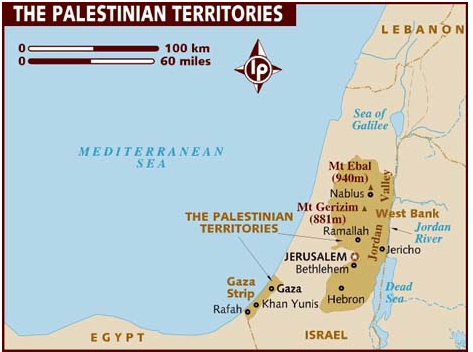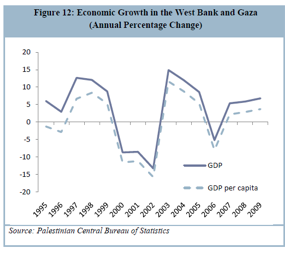
Did you know that Kiva offers loans in the Palestinian Territories? Anyone who reads the news knows that this is a very challenging operating environment. Kiva is proud to be supporting creative and courageous entrepreneurs in the region.
For the month of April, we will be highlighting Palestinian borrowers and our lending activities to help people build brighter futures.
GEOGRAPHY
The Palestinian Territories are divided into two parts -- the West Bank and the Gaza Strip. The West Bank is small in area -- slightly smaller than Delaware, and the Gaza Strip is even smaller -- about twice the size of Washington D.C. Of the roughly 4.3 million people living in the Palestinian Territories, about 61% of them live in the West Bank.

To the south is the Gaza Strip. Despite having 40 km of Mediterranean coastline at its disposal, at this time, all maritime traffic is blocked by the Israeli Navy.
PRESENT SITUATION
During the Six-Day War of 1967, Israel seized the West Bank, East Jerusalem, and the Gaza Strip, which marked the start of the occupation of the Palestinian Territories. Today, Israel still holds authority over the West Bank, while also maintaining an economic blockade of the Gaza Strip. Settlement building and a “separation barrier” constructed along and within the West Bank are especially problematic because they sever communities and people’s access to land, resources, and services. A U.N. report released last September stated that the Palestinian economy has lost access to 40% of the West Bank, 82% of its groundwater, and more than two-thirds of its grazing land. It is easy to imagine how this could pose unique economic challenges in the region.
ECONOMY
Instability in the region has undoubtedly impacted the economic development in the Palestinian Territories. While the West Bank has exhibited a moderate rate of growth in recent years, much of it is due to the influx of international aid rather than sustainable economic development. This reality has meant that gains within the private sector have been limited, with many small businesses still facing numerous economic challenges.

In Gaza, the economic development has been hindered by Israel’s control over the coastal enclave’s borders, waterways, and airspace. This situation has significantly disrupted industrial capacity as many traders and producers are unable to bring in raw materials or machinery necessary for running their factories and warehouses. In fact, only about 30% of garment factories are operating and almost all food factories are running on low capacity.
The unstable economic situation in the West Bank and Gaza has led to increased poverty, with 21.9% of the population living below the poverty line. Much of this is caused by high unemployment rates -- about 23.5% in the West Bank and a whopping 40% in Gaza. The limited job opportunities in The Palestinian Territories especially impact youth, who comprise a significant part of the population. The third highest in the world, youth unemployment is 46.9% among Palestinians -- falling only behind South Africa and Bosnia and Herzegovina!
With these economic realities, Kiva’s field partners in the Palestinian Territories make concerted efforts to help individuals overcome the different challenges they face.
Make a loan to a Palestinian borrower today! And stay tuned for the next installment of the Palestine Passport Series, where we will look at how partners in the West Bank and Gaza are working to expand access to capital and critical financial services.
PREVIOUS ARTICLE
Semana Santa (Holy Week) in Guatemala →NEXT ARTICLE
Introducing the Kiva portfolio dashboard →














